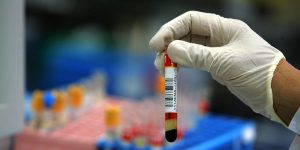The worlds of the fantasy writer N. K. Jemisin are as imaginative as they are intimate. In her Inheritance trilogy, the gods are real and walk the streets. Her Hugo Award-winning Broken Earth books feature a supercontinent called the Stillness that is anything but—the very land is a geologic time bomb, ravaged by earthquakes and volcanic eruptions. The backdrop for “Sinners, Saints, Dragons, and Haints, in a City Beneath Still Waters,” part of Jemisin’s 2018 story collection How Long ‘Til Black Future Month?, is a New Orleans beset by climate chaos. When Jemisin builds these environments, she’s not just filling out the intricacies of the flora and fauna; she’s thinking about how the citizens of these realms would live their lives. For Jemisin, world-building is ultimately about power—who is wielding it and who is being stripped of it.
“Each flavor of oppression tends to support others,” she said during a two-hour world-building workshop at the WIRED25 festival in San Francisco last weekend, where Jemisin coached the crowd in constructing secondary-world societies. “I’m most interested in character. However, character is informed by culture, and culture is informed by environment. In a lot of cases, to understand the character I need to understand literally everything about their world.” To do so, she applies two frameworks: one that focuses on macroworldbuilding (the creation of the physical environment in which the story will take place—planet, continents, climate, ecology, and culture) and one that focuses on microworldbuilding (the societies that result, in all their flavors of social stratification).
In the session, Jemisin unpacked the latter, explaining that one of the biggest pitfalls in world-building was that writers don’t approach it thoughtfully. “The screw-up is that people just don’t do it at all,” she said. “People go into creating a world that is not like ours with their embedded assumptions about how our world works still firmly in place. So they end up creating our world but with tentacle sharks.” She continued, “If you are going to go into this completely alien world still thinking like a modern 2019 American, then you’re not doing your job as a creator.”
Doing it right requires supreme attention to nuance. If you’re building a society from the top down—her recommendation—start with species (which she says is dictated by the macroworld’s ecology), then consider their morphology (“consistent physiological variations within a species, like lactose intolerance”), raciation, acculturation, power, and role.
It didn’t take long for Jemisin to get the audience involved. The inhabitants of their world, they collectively dreamed up, would be salmon-shark creatures with five tentacles on each fin living in a tempestuous channel on an Earth-like planet. (The stuff of nightmares, Jemisin noted.) Jemisin pressed them to consider physiology: “Are there some with different colorations? Are there some who prefer the top of the water versus the bottom of the water?” When one audience member suggested that some would have gills and others wouldn’t, Jemisin worked through the possible ramifications. “In this [water-based] society, if they are treating the people without gills as less important, that’s just straight-up genocide. My guess is that the power dynamics of the society are going to put no gills at the top, because you’ve got to have more resources for the people with gills.”
That kind of deep care is what has made Jemisin one of the most acclaimed fantasy and sci-fi writers working today. It’s what makes her writing breathe, a living rebuttal to certain critics who might dismiss world-building as “a largely counterproductive concept for most types of fiction” that is “narrowing the paths available to writers and to readers.” Jemisin’s realms are epic, lush, and peculiar. They feel lived in, painstakingly thought-through. The power relations between her characters are often a direct result of the lands they inhabit. It’s another deft way Jemisin speaks to the times, even as her stories unfold on faraway planets.
Before the talk came to a close, Jemisin gave attendees a preview of her new book, The City We Became, out next March. It finds her in new territory: Earthbound and grappling with the frictions of our current moment. “For the first time I’m writing in New York City in 2019, and I found it a lot harder, because I can’t just make stuff up,” she said, laughing. “It’s a little awkward.” Nonetheless, the world-building exercise still applies. “Even though it’s New York and I theoretically know it like the back of my hand, I actually changed something at the universal level in that story, and I had to work through how it would affect the world on down.”
World-building does not mean predicting the future—it’s about mirroring the present. In fact, Jemisin said sci-fi writers have historically been pretty bad at prophecy. “The tendency to center on technology is typically one of the worst ways when focusing on futurism,” she said. “What we need to look at are the ways in which human beings are evolving, societally speaking. I have no predictions for that.” But, she added, “I have a great deal of hope that we will start to realize that allowing certain kinds of manipulations is actually dangerous to the societies that we want to create. Right now, only some of us seem to realize that, and the rest of us seem to think that it is perfectly OK.”
- Livestream: Watch the future unfold here
- Essay: It’s time to push tech forward, and rebuild what it broke
- November Issue: Stories of people who are racing to save us
- Summit+Culture & Fam: Full event details
- Want more WIRED? Subscribe now



